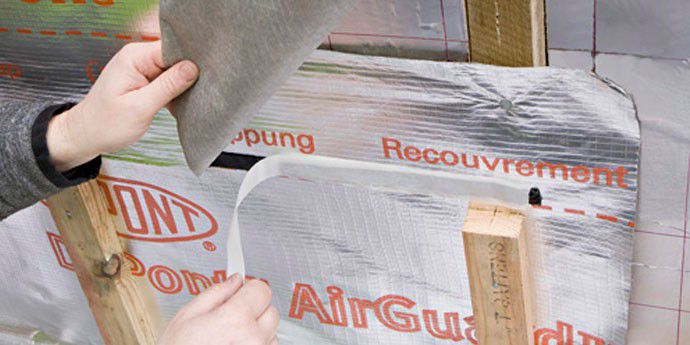How To - Fixing The Vapour Barrier And Vapour Control Membrane – Timber, Concrete And Steelwork
Article
Fixing the vapour barrier and vapour control membrane – timber, concrete and steelwork

The following article covers some best practice experience sharing by the DuPont™ Tyvek® Technical team on how to ensure a successful installation. These guidelines have been developed through the team’s technical support at construction sites and direct feedback from contractors.
For timber structures, initial/temporary fixing of the membrane is normally achieved with stainless steel staples. These may be positioned at the overlap where the vapour control and vapour barrier membrane is to be later sealed with tape. For best practice, fix the membrane using double sided tape, as this will help to minimise penetrations. Where shrinkage or movement within the structure is likely a flexible seal, such as butyl tape will be of benefit.
When the vapour control and vapour barrier membrane is fixed to a concrete substrate, ensure the surface is clean and dry. A double sided acrylic tape will provide an effective bond between the two materials if the concrete surface is relatively smooth. Where the surface is uneven a butyl tape is recommended, as it can accommodate small gaps and imperfections.
Double sided acrylic tape is also recommended to temporarily fix a vapour control and vapour barrier membrane to steelwork. A permanent fix will occur when timber battens, metal channels/brackets or the internal lining are installed over. Care should be taken to ensure that the time period allowed between these applications is minimal. For extra security a drill tip screw or self-tapping screw with an EPDM washer may also be used.
